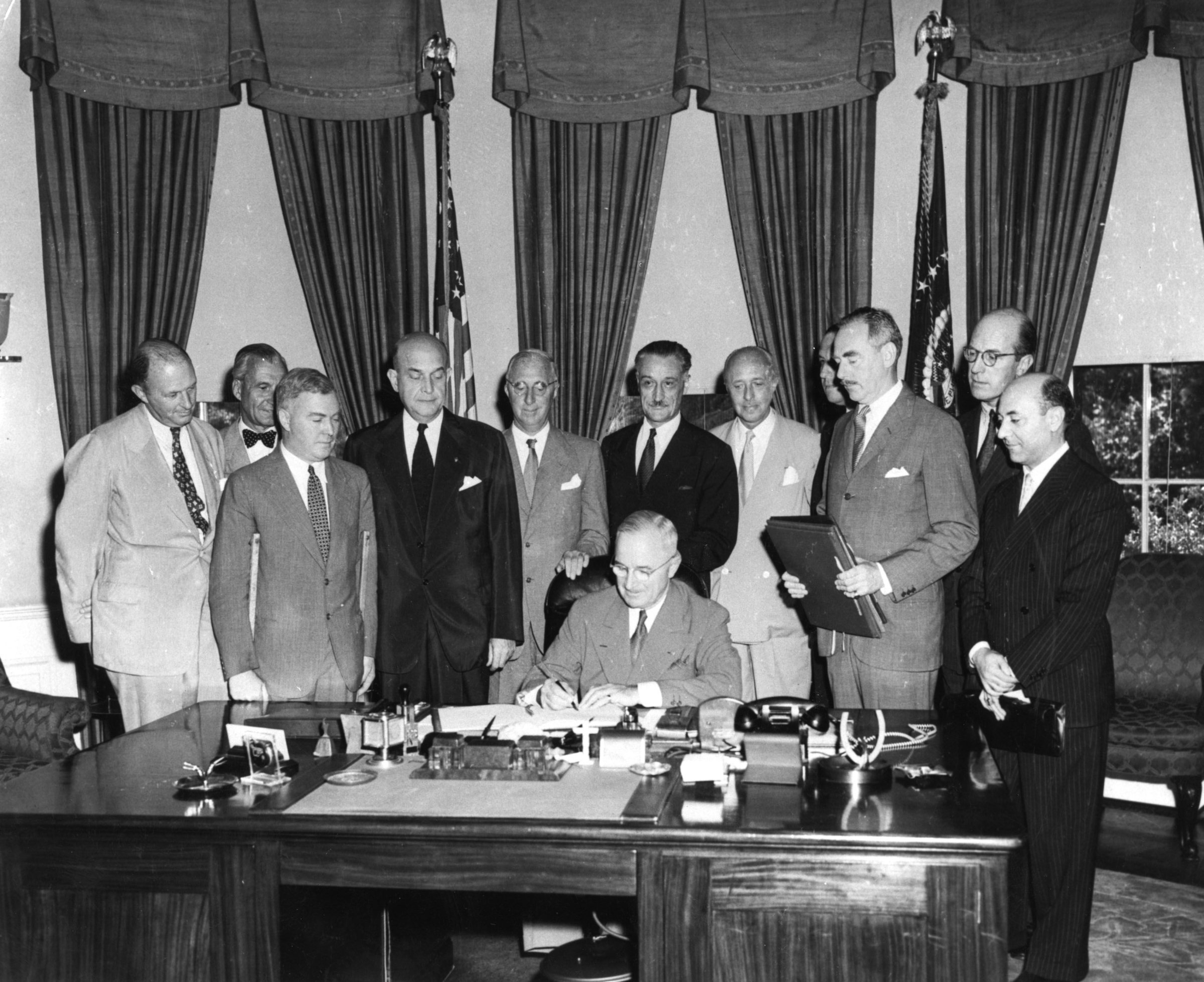
On Wednesday, President Donald Trump will hold a joint press conference NATO Secretary-General Jens Stoltenberg at the White House. The meeting between the North Atlantic Treaty Organization leader and the U.S. President may be an unusually tense one, as Trump has repeatedly described the group as “obsolete” over the least year.
Numerous pundits have been analyzing what that comment mean for the future of what’s known as the world’s largest peacetime military alliance. But here’s a quick refresher on why the partnership formed in the first place.
Before NATO, the U.S. had never entered a peacetime military alliance outside of the Western Hemisphere. But in the wake of World War II, as the Cold War was heating up, a series of events in the late 1940s created an understanding in the Truman administration that the security of Western Europe was tied to the security of the United States. According to the Department of State’s Office of the Historian, those events included a civil war in Greece, tensions in Turkey, a Soviet-sponsored coup that catapulted the Communist party to power in Czechoslovakia, the Communist Party’s rise in Italy, and Soviet premier Joseph Stalin’s blockade against the Allied-occupied West Berlin.
Several Western European countries — Great Britain, France, Belgium, the Netherlands and Luxembourg — formed a military alliance by signing the Brussels Treaty in March of 1948. On April 4, 1949, the North Atlantic Treaty, which created NATO. was signed by foreign ministers of the 12 signatory nations: Great Britain, France, Italy, the Netherlands, Belgium, Luxembourg, Norway, Denmark, Portugal, Iceland, Canada, and the United States.
The treaty nations agreed to the doctrine of collective security, that “an armed attack against one or more of them in Europe or North America shall be considered an attack against them all” and that each of them would provide assistance in such a situation.
But, as TIME magazine’s “NATO at 50” cover argued, Trump is certainly not the first politician to question its purpose in the 21st century:
That future has been the subject of debate among NATO planners ever since the Berlin Wall fell in 1989, presaging the collapse of both communism and the Soviet Union. A redefinition of the structure and purpose of the alliance was unavoidable. After all, it was formed a half-century ago amid the rubble of World War II with an objective of preventing World War III. It was a defensive pact, but designed to anticipate, and thus deter, the most logical war scenario: a mass attack by Soviet and Warsaw Pact tanks and troops through the Fulda Gap into western Germany.
To that end and beyond, the alliance performed brilliantly. Its record was not perfect, but by providing an umbrella of collective security and a framework for resolving disputes among its own members, NATO contributed greatly to political and economic integration on the Continent. It also kept the United States involved institutionally in Europe — providing a stabilizing presence that was lacking before this century’s two global wars — helped engineer Germany’s unification, and facilitated the peaceful collapse of the U.S.S.R.
Mission accomplished, the alliance for the past decade has tried to adapt to the results of its success. But thus far its approach has been ad hoc. In 1991 NATO announced a strategy which downplayed defense and stressed dialogue, leading to the 1994 “Partnership for Peace” that reached out to Russia. In 1995, NATO helped end the war in Bosnia with military force which led to the October cease-fire. Last month, the alliance welcomed new members Poland, Hungary and the Czech Republic. But dialogue, peacekeeping, and expansion failed to address the question of NATO‘s role as a military force. In that policy vacuum local dictators like Slobodan Milosevic became bolder and ancient hatreds blazed anew, Kosovo being only the most immediate example.
The White House has said that Stoltenberg and Trump will discuss “how to strengthen the alliance to cope with challenges to national and international security.”
More Must-Reads from TIME
- Why Biden Dropped Out
- Ukraine’s Plan to Survive Trump
- The Rise of a New Kind of Parenting Guru
- The Chaos and Commotion of the RNC in Photos
- Why We All Have a Stake in Twisters’ Success
- 8 Eating Habits That Actually Improve Your Sleep
- Welcome to the Noah Lyles Olympics
- Get Our Paris Olympics Newsletter in Your Inbox
Write to Olivia B. Waxman at olivia.waxman@time.com